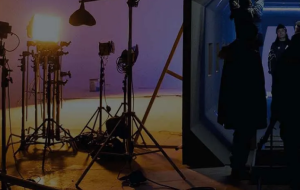Photography is an art that hinges on precision and control. A crucial aspect of capturing the perfect shot is deciding how to focus your camera. Two primary methods dominate this decision-making process: manual focus and autofocus. In this article, we delve into the nuances of manual focus vs. autofocus, shedding light on what each entails and exploring the concept of follow focus.
Manual Focus: The Hands-On Approach
Manual focus, as the name suggests, requires the photographer to manually adjust the camera's focus settings. This involves turning the focus ring on the lens to bring the subject into sharp clarity. Photographers who opt for manual focus often appreciate the level of control it provides. It allows them to fine-tune the focus to achieve the desired artistic effect.
One significant advantage of manual focus is its reliability in situations where autofocus may struggle. For example, when shooting through glass, capturing macro images, or in low-light conditions, manual focus can be the preferred choice. In these scenarios, the photographer's expertise in precisely adjusting the focus can make all the difference in achieving a sharp image.
Autofocus: The Convenience of Automation
Autofocus, on the other hand, is a technology-driven approach that relies on the camera's built-in system to determine the correct focus point. This system uses sensors, contrast detection, or phase detection to quickly and accurately focus on the subject. what is follow focus.Autofocus is the default choice for many photographers, especially in fast-paced situations where speed is paramount.
One key advantage of autofocus is its efficiency. It can rapidly lock onto subjects, making it ideal for action photography, wildlife shots, or capturing fleeting moments. Modern autofocus systems have evolved to become incredibly precise, often outperforming manual focus in terms of speed and accuracy.

Understanding Follow Focus
While manual focus and autofocus are the primary focus modes, another concept closely related to manual focus is "follow focus." Follow focus is a technique used in videography rather than traditional photography. It involves adjusting the focus smoothly and consistently while recording video to maintain a sharp subject as it moves.
Follow focus is particularly useful in situations where the depth of field is shallow, and precise focus adjustments are crucial to keep the subject in focus. Videographers employ specialized follow focus rigs that allow for precise and controlled focus adjustments throughout a shot. This technique adds a cinematic quality to videos, creating a professional and polished look.
Choosing the Right Focus Mode
The choice between manual focus and autofocus, as well as the consideration of follow focus in videography, largely depends on the specific requirements of the photography or videography project. Here are some key considerations:
- Control vs. Convenience: Manual focus offers control, while autofocus provides convenience. Choose based on the level of control required for the situation.
- Subject and Lighting: Consider the subject you're shooting and the lighting conditions. Manual focus excels in certain scenarios, while autofocus may perform better in others.
- Skill and Expertise: Your familiarity with your camera and its focus modes plays a role. Experienced photographers often master manual focus, while beginners might start with autofocus.
- Type of Photography: The genre of photography matters. Portraits, landscapes, and macro photography often benefit from manual focus, while action and sports photography lean toward autofocus.
In conclusion, understanding the distinctions between manual focus vs. autofocus is essential for any photographer or videographer. The choice between these modes depends on factors like control, subject, and the specific project requirements. Additionally, videographers should explore the technique of follow focus to achieve smooth and professional-looking videos.
Ultimately, both manual focus and autofocus have their places in the world of photography and videography. Mastering when and how to use each mode is the key to capturing stunning visuals and telling compelling visual stories.
